13.2 Editing a Job
After you create a job, you need to add the necessary information to make the job useful. To edit a job, double-click a newly created job in the Outline view to bring up the job in the IDM Job Editor view.
Figure 13-2 The IDM Job Editor View
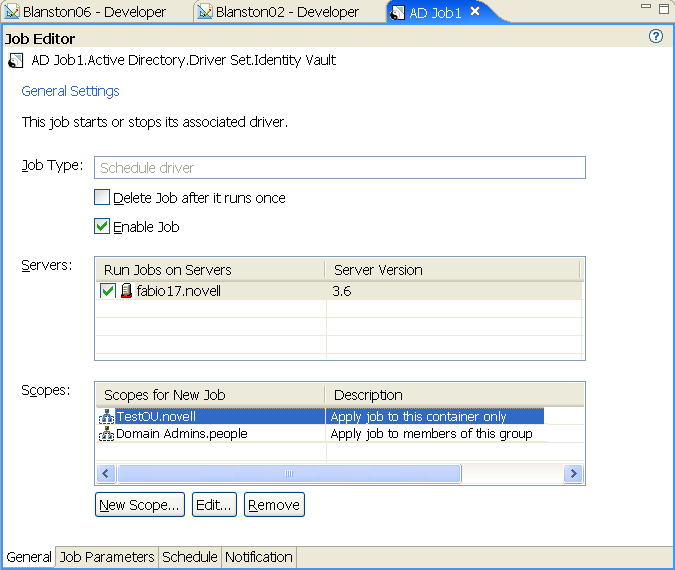
The IDM Job Editor has four tabs at the bottom of its view:
13.2.1 Job Editor Selections on the General Settings Page
The title of the General Settings Page shows the Java class name of the job. This is followed by the job type, which shows the type of job you selected. Under the heading, you can enable or disable the job, or to delete the job after it runs.
Figure 13-3 Items Under the General Tab

-
To delete the job after it runs, select .
-
To disable the job from running, deselect .
-
In the column, select the server or servers where this job should run.
A filtered list of servers is available to help you assign this job. A custom job can be installed on one server but not on another. In this case, the server without this custom job is filtered out of the Server List.
A job can be assigned to multiple servers as long as it has been installed on each server. Designer only allows this association if the jobs are properly installed and packaged so that the Metadirectory engine can see them.
-
To add a scope to the column, click .
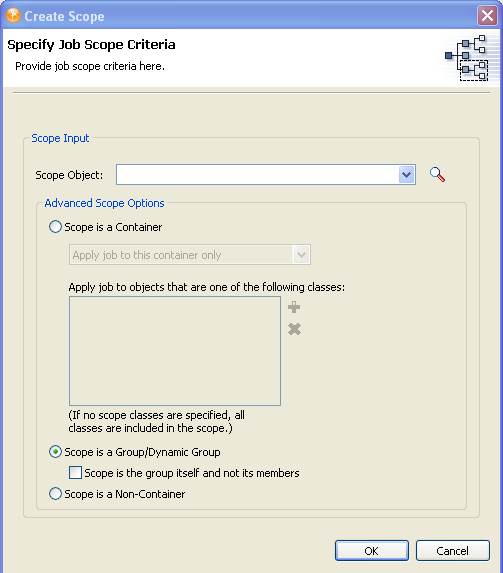
-
To select a scope object, type the Distinguished name of the object or use the icon to browse to the object. Click to add the scope object.
Scopes allow you to define the objects that this job applies to. An object in eDirectory can be a container, a dynamic group, a group, or a leaf object. If you select a group object, you can apply the job to the group's members, or only to the group. If you select a container object, you can apply the job to all descendants in that container, to all of the children in the container, or to the container only.
-
If the object is a container, select . Then select how you want to apply the job:
-
Apply job to this container only
-
Apply job to children of this container
-
Apply job to all descendants of this container
-
-
(Optional) If you select or , you can specify the classes and attributes you want to scope. Click the plus icon to bring up the Schema Browser window to select the classes you want to scope. Select the class schema, then click .
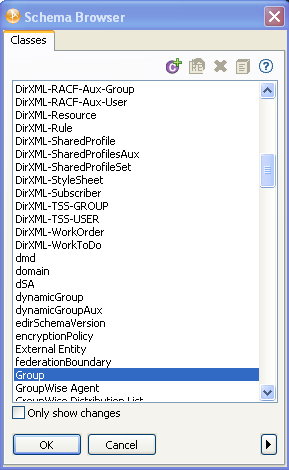
The classes are added to the Classes box. To remove a class, select it and click the minus icon.
-
If the object is a group or a dynamic group, select . You can then select the option if the scope is for the group.
-
If the object is a non-container, select .
-
After the scope criteria are selected, click to return to the General Settings page.
-
If you need to edit a scope, select the scope name, then click .
-
To remove a scope, select the scope name, then click .
Deploying a Job with Scope Objects
Jobs might need access to eDirectory data and certain Identity Manager actions, such as starting and stopping drivers. Such access is subject to eDirectory rights assignments and is controlled by the rights that are granted to the DirXMLJob object. Although Identity Manager actions are controlled by special attributes, normal eDirectory rights are needed for data reads and writes.
When you deploy a job object that has scope objects, there might be eDirectory rights assignments that Designer cannot properly set up. The rights needed to complete the task depend on the scope objects that are assigned to the job object.
Figure 13-4 Warning Messages When Deploying a Job with Scope Objects
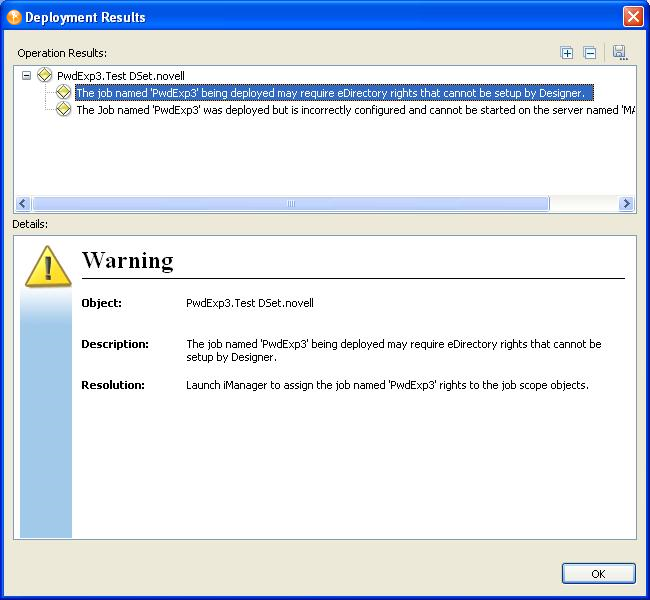
If you see this warning when deploying job objects, use the iManager utility to assign eDirectory rights to the job object so it can properly access the job scope objects and complete its task.
13.2.2 Job Editor Selections on the Job Parameters Page
The Job Parameters page allows you to add additional parameters to the job and to view the parameters as they are presently set up. What you can do depends on the type of job you selected.
NOTE:The parameters for a custom job vary based on the job’s design. For more information about creating a custom job, see Section 13.1, Creating a Job.
Parameters for the Schedule Driver Job
Figure 13-5 The Job Parameter Page for a Schedule Driver Job
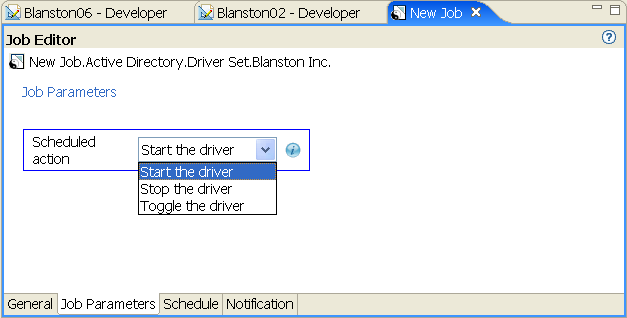
-
If you want the job to start the driver, select .
-
If you want the job to stop the driver, select .
-
If you want the job to switch from one to the other, select .
Parameters for the Generate Random Passwords Job
Figure 13-6 The Job Parameter Page for the Generate Random Password Job
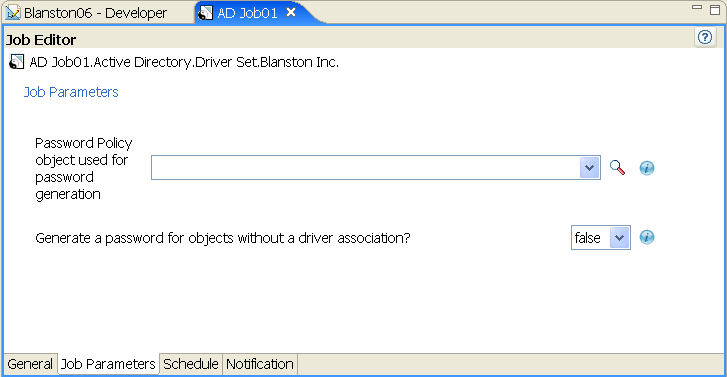
-
Type the Password policy object’s Distinguished name, or use the icon to select the Password policy you want to use for password generation.
-
If you want to generate passwords for scoped objects without a driver association, select . Otherwise, select .
Parameters for the Subscriber Channel Trigger Job
Figure 13-7 The Job Parameter Page for the Subscriber Channel Trigger Job
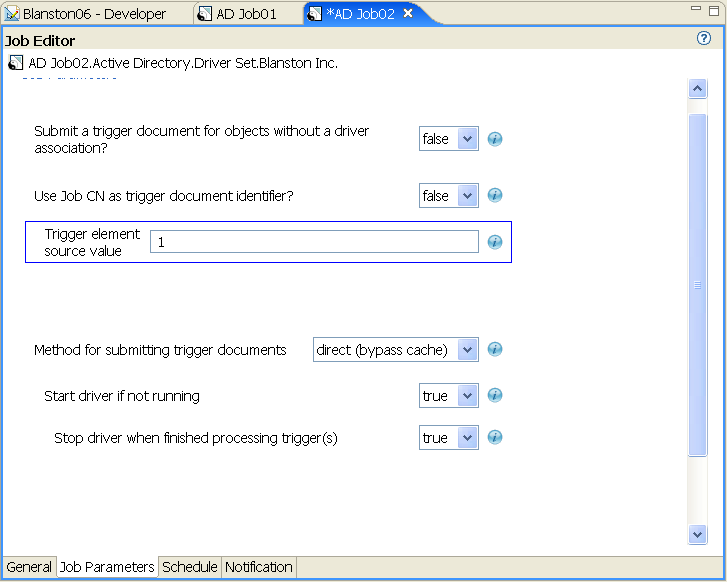
-
If you want to submit a trigger document for scoped objects that do not have a driver association, select . Otherwise, keep the default of .
-
If you want to use the job’s Common Name (CN) as a document identifier trigger, keep the default of . Otherwise, select .
-
(Optional) If you select , enter the string that the job can use as the value for the trigger element’s Source attribute.
-
Select a method for submitting the trigger documents. If you want to queue the job the trigger is from, keep the default of . Otherwise, select .
-
(Optional) If you select , you are presented with the option. If you want to start the driver if it is not running, keep the default of . Otherwise, select .
-
(Optional) If you select on the option, you are presented with the option with the default of . Use the default to stop the driver once it finishes processing the trigger job, or select to keep the driver running.
A customized job definition has its own parameter set.
13.2.3 Job Editor Selections on the Scheduler Page
The Scheduler page allows you to set up when you want to run the job.
Figure 13-8 The Job Options for the Scheduler Page
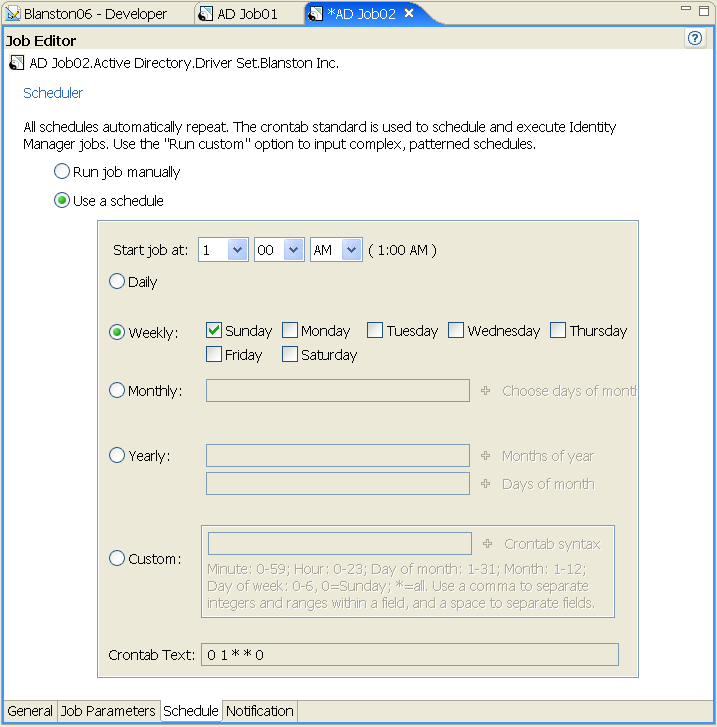
-
Select the option to set the date and time, and whether to run the job daily, weekly, monthly, yearly.
or
Select the option to run the job when you choose to.
-
With selected, set the time when you want the job to start running. Use the drop-down menus to select the hours, minutes, and AM or PM. The default is 1:00 AM.
-
If you want to run the job repeatedly, use the , , , , or fields to select when you want it to run.
For example, if you want the job to run weekly, select , then the day you want it to run on. If you want the job to run once a month, select , then click the Plus icon to select the day of the month.
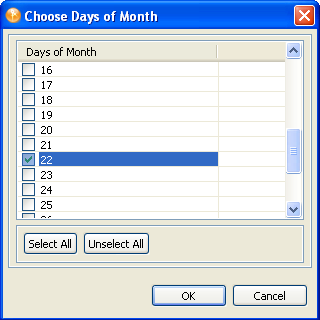
-
(Optional) Select , to choose minutes, hours, days, months and days of the week from the Choose Advanced Crontab Criteria page.
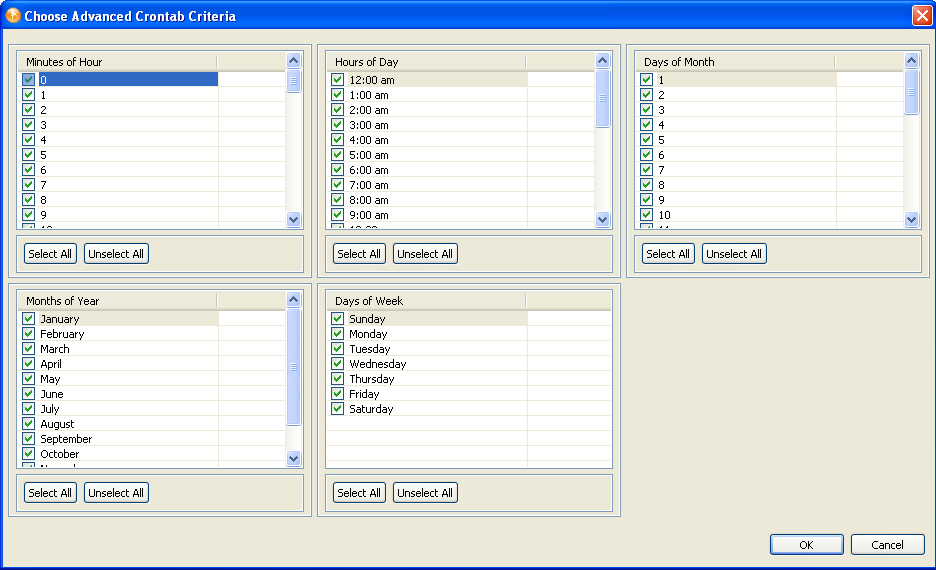
-
The Choose Advanced Crontab Criteria page default has everything selected. Click , choose the time and days you want to run the job, then click to return to the Scheduler page.
The information displayed in the field displays any settings you make on the Scheduler page. For example, if you click and select two days, those two days are displayed in the field.
13.2.4 Job Editor Selections on the Notification Settings Page
The Notification Settings page allows you to define what you want to do with the job results. It is divided into two parts, Intermediate and Final, with the Success, Warning, Error, and Aborted results for each part.
The Notification Settings page allows you to set how you want to be notified for each result. Actions include sending an audit result or sending an e-mail when the result completes.
Figure 13-9 The Job Options Under the Notification Tab
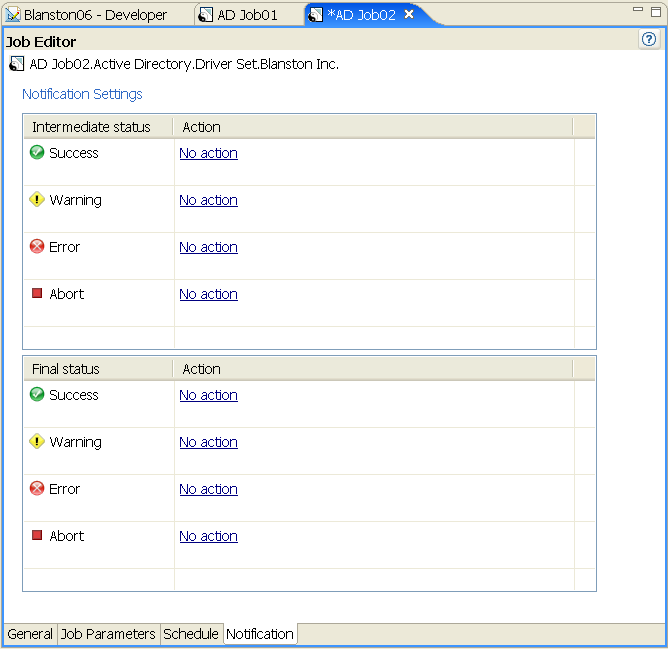
-
If you select , Designer allows you to search in the directory for an appropriate template to use in the field. Click the icon to select an appropriate template.
-
Under Notification Recipients, select who you want to send the results to by typing the user’s or group’s fully distinguished name. You can use the Plus icon to create a mail profile or click the icon to choose a mail profile.
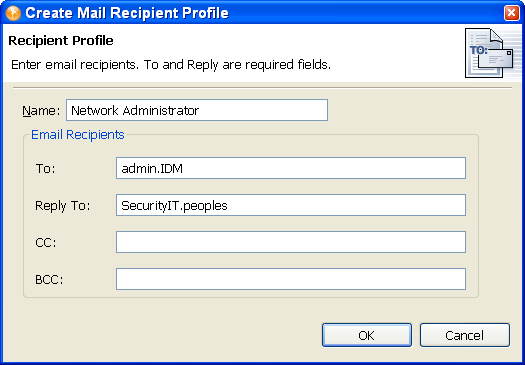
The To and Reply fields are required for a profile.
-
When you have filled in the information, click .
-
If you want the results to go to Novell® Audit, select .
-
Use Step 1 through Step 4 for each of the options:
-
Intermediate Success
-
Intermediate Warning
-
Intermediate Error
-
Intermediate Abort
-
Final Success
-
Final Warning
-
Final Error
-
Final Abort
If you do not select an option, no action is taken for the result.
-